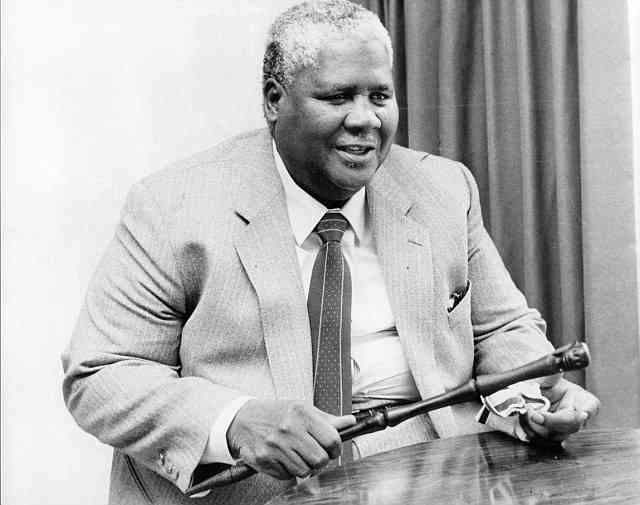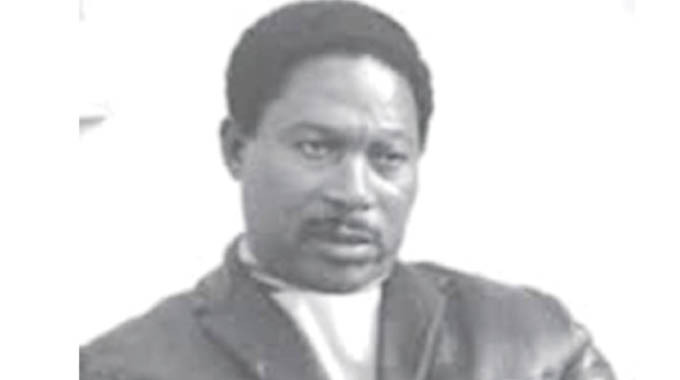
THE government has been urged to urgently look into the plight of the San community who are wallowing in poverty.
Own Correspondent
The San, popularly known as the Tshara-Tshwao or Khoi-khoi gathered at Gariya Dam in Tsholotsho on Saturday to celebrate the United Nations International Day of the World’s Indigenous People, whose objective is promoting the non-discrimination and inclusion of indigenous peoples in the design, implementation and evaluation of international, regional and national processes regarding laws, policies, resources, programmes and projects.
The San are mostly found in Tsholotsho and Plumtree and their population currently stands at about 2 000, a worrying figure that has jolted some organisations to action in offering a helping hand to the group.
Creative Arts and Education Development Association (Caeda) spearheaded by Davie Ndlovu, is one such organisation which is working with the group, assisting them to document the Tshwao language which is facing extinction.
According to Ndlovu, there are about 14 members of the San community in Tsholotsho who are conversant with the language.
The rest hardly speak the language and have adopted Ndebele, the dominant language in the area.
Addressing over 100 members of the group, Ngcoli Sibanda — a community leader — appealed to the new government to assist them with food and farming implements. “We are wallowing in poverty. We, therefore, appeal to our government to assist us with food parcels and farming implements so that we can be able to fend for our families,” Sibanda said.
- Chamisa under fire over US$120K donation
- Mavhunga puts DeMbare into Chibuku quarterfinals
- Pension funds bet on Cabora Bassa oilfields
- Councils defy govt fire tender directive
Keep Reading
“We are such a small number and we hope the government and non-governmental organisations will come to our aid.”
Sibanda revealed that they were still finding it difficult to assimilate into other tribes and this had worsened their plight.
“We are used to living in the bush and surviving on hunting, but nowadays we can no longer do so because of laws that are prohibiting us. We survive on doing menial jobs in exchange for food.
“We have no cattle or farming implements and, therefore, it is difficult for us to provide food for our starving families,” he said.
In an interview with Southern Eye, Ndlovu said Caeda had approached some government ministers during the unity government era who had promised to assist the San people.
“We had approached Education, Sport, Arts and Culture minister David Coltart and Water Resources minister Samuel Sipepa Nkomo. They had expressed a willingness to assist the San people,” he said.
“Now that we have a new government, we are not sure whether these people will still offer their assistance. However, we will be sending a petition to the new government soon,” Ndlovu said.
“We also hope that they will get farming implements before the commencement of the rainy season. “These people are willing to start farming if they get all the necessary equipment and implements.”
Ndlovu said while they were happy that the government had recognised Tshara-Tshwao as an official Zimbabwean language in the new Constitution, there was a need for extensive work to be done to save the dying language.
“Our major worry at the moment is that the Tshwao language is dying and something must be done to preserve it,” he said.
“We have engaged the University of Zimbabwe which is assisting us with documentation. “The other problem is that the education system does not cater for the San. “There is no-one among the San who is educated enough to be able to teach this language in schools,” Ndlovu added.
“Right now their children who are fortunate enough to go to school are learning Ndebele and are fast losing touch with their own culture.” Jabulani Nkomo — the son of the late Vice-President John Nkomo who was supposed to be guest of honour — failed to turn up for the event.
. . .as community opens up
MORE than 100 members of the San community in Zimbabwe gathered at Gariya Dam in Tsholotsho North on Saturday to celebrate and revive the dying Tshara-Tshwao culture and launguage.
The cultural fiesta also commemorated the United Nations International Indigenous People Day.
The day is celebrated annually on August 9 as the world turns its attention to the diverse cultures and people in neglected parts of the world.
On Saturday, the group opened up to the world to observe at close proximity how they live in their most natural habitat, the bush.
They chose a secluded part close to Gariya Dam, named after one of their chiefs Gariya Moyo who led a group of San people from Botswana to Zimbabwe in the 16th Century, according to one of the leaders who spoke to Southern Eye.
The celebrations kicked off with a leadership meeting in the morning where various community leaders addressed a plethora of problems faced by the San people. Chief among them was the issue of selection of one leader to represent them in various fora.
The meeting also resolved that a petition will be sent to the government detailing all their grivances, which they want addressed.
Unlike other tribes, the San lived in small groups of between 20 to 50 people, led by a kraal head.
After the meeting it was time to celebrate. What a colourful celebration it turned out to be!
Various groups took to the stage to showcase their vocal abilities and dancing prowess.
The stand-out dance was the bhoro, a cultural dance usually performed at night during healing sessions.
Most of the dancers and singers were elderly people who still know how to speak the Tshwao language.
The dances comprised songs accompanied by rythmic handclapping routines and complicated footwork.
There was a small museum on display that showcased the various artifacts that the San people used. Since the San were nomadic people, they never built any permanent structures.
They carried the simplest of tools and utensils that they used in their day-to-day activities.
Their food comprised mainly game meat which they hunted. They also ate various fruits and plants, which were also used for medicinal purposes.
Now that they have been integrated with other tribes in Zimbabwe, their culture and language is under serious threat and if nothing is done to preserve it, it will soon die out.
The San community, found in parts of Matabeleland North and South, are said to number about 2 000 people.
In Tsholotsho alone, only 14 elderly people can speak the Tshwao language, the rest speak Ndebele the dominant language in the area.










